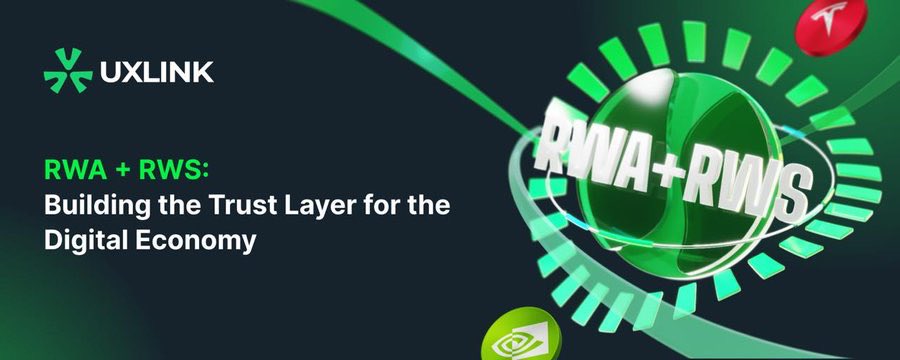How can UXLINK bring RWA one step closer?
In the past two years, RWA (Real World Assets on-chain) has become one of the loudest narratives in Web3. Pioneers like @chainlink have brought real-world asset data securely on-chain through decentralized oracles, allowing tokenized bonds, real estate, and even U.S. Treasuries to flow on-chain. It has solved the problem of asset tokenization and laid the foundation for transparency and credibility.
However, data accuracy alone is not enough for assets and transactions. In the real-world financial system, there is a more critical dimension beyond data: trust between people. This is why UXLINK's launch of RWS (Real World Social on-chain) is seen as a natural complement to RWA.
▰▰▰▰▰▰▰
Positioning of RWS
The core logic of RWS is simple: to bring the social relationship graph onto the chain in a verifiable way. This way, identity, relationships, and interactions can become the trust foundation of Web3.
This is not just a concept; it directly brings application value:
※ In RWA issuance, RWS can verify participant identities and networks, reducing fraud and enhancing compliance.
※ In DeFi or P2P transactions, social verification can serve as an additional layer of security, increasing the credibility of counterparties.
※ In DAO governance, RWS allows voting power to better reflect real relationships, avoiding zombie accounts and vote manipulation.
▰▰▰▰▰▰▰
Why is this the trust layer?
We often say that Web3 is code as law, but relying solely on code cannot solve all trust issues. In the real financial system, credit, relationships, and connections are often as important as the assets themselves.
The significance of RWS lies in assetizing and verifying these relationships. This way, Web3 is no longer just a cold ledger of assets but can become an economic entity closer to reality:
※ There are people behind the assets.
※ There are relationships behind the transactions.
※ There is a real social network behind the governance.
▰▰▰▰▰▰▰
Summary
RWA is the first step in bringing value on-chain, but without the complement of RWS, it still lacks the dimension of social trust. The projects that can emerge in the future will inevitably be driven by both assets and relationships.
And UXLINK's exploration of RWS just fills this gap. It may not be the most attractive narrative, but in the current moment of industry self-reflection, it offers a sustainable path: allowing people, relationships, and assets to truly coexist in a trustworthy digital economy.
#KaitoYap @KaitoAI @UXLINKofficial @RollandSaf #Yap $UXLINK
Show original
13.95K
153
The content on this page is provided by third parties. Unless otherwise stated, OKX is not the author of the cited article(s) and does not claim any copyright in the materials. The content is provided for informational purposes only and does not represent the views of OKX. It is not intended to be an endorsement of any kind and should not be considered investment advice or a solicitation to buy or sell digital assets. To the extent generative AI is utilized to provide summaries or other information, such AI generated content may be inaccurate or inconsistent. Please read the linked article for more details and information. OKX is not responsible for content hosted on third party sites. Digital asset holdings, including stablecoins and NFTs, involve a high degree of risk and can fluctuate greatly. You should carefully consider whether trading or holding digital assets is suitable for you in light of your financial condition.

